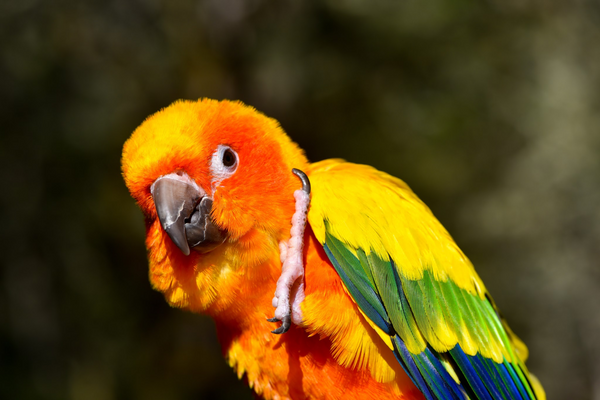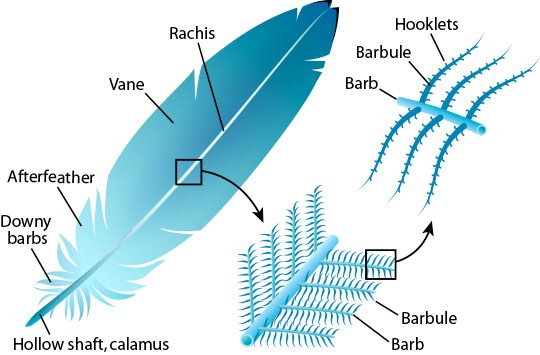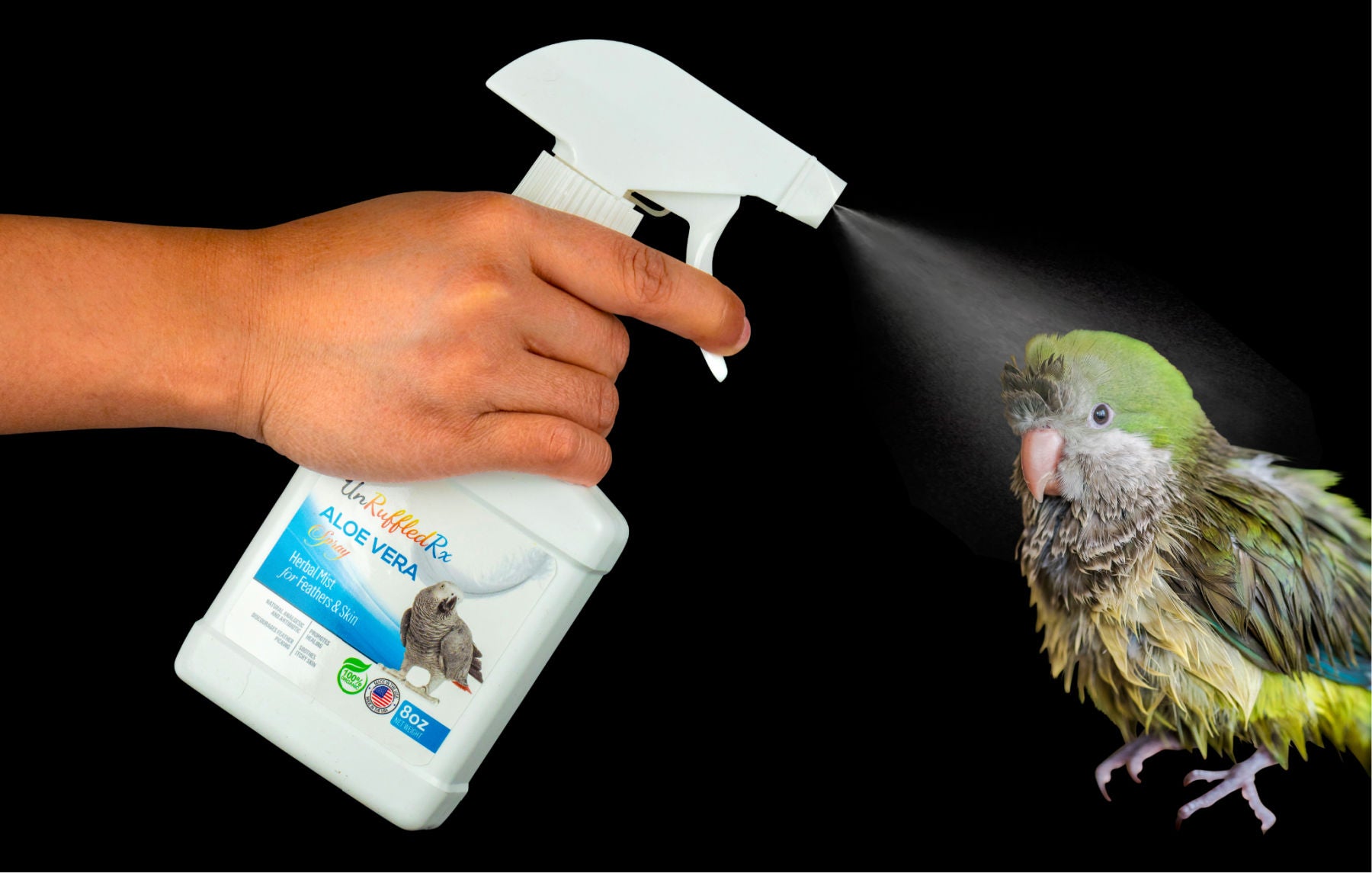Table of Contents
- What causes molting in birds?
- What is Molting in Parrots?
- How Long Does it Take for a Bird to Molt?
- What time of year do birds molt?
- What Is A Partial Molt?
- What is a Complex Molt?
- Is Molting Species-Specific?
- Understanding the Process of Molting: What’s Happening Underneath the Skin?
- How Do You Know When A Bird Is Molting?
- Pet Birds and Molting: Something Seems Off!
- Is Molting Painful For Birds?
- What Does Molting Look Like?
- How to Support a Molting Bird
- How To Comfort A Molting Bird
- Is My Bird Molting or Plucking?
What causes molting in birds?
When birds molt, they're just getting rid of their old feathers and growing new ones. It's like when you shed your old skin cells and new ones grow underneath.
Birds need to do this because their feathers get worn out from flying and other activities. It's important for them to have fresh feathers so they can stay healthy and keep warm.
Different types of birds molt at different times, so it's normal if your pet bird starts shedding its feathers at certain times of the year.
In this guide, we'll tell you all about molting birds. You'll learn what molting is, why it happens, and what you can do to help your pet bird through the process.
So let's dive in and become experts on molting birds!

What is Molting in Parrots?
Molting is the process of shedding old and weathered feathers to replace them with fresh, brand-spanking new ones. Birds rely on healthy, intact feathers for flight.
Just like our hair and nails, a bird’s feathers are made of a protein called keratin.
However, unlike our hair and nails that keep growing, once a bird’s feather has reached maturity, the blood in the shaft recedes and the feather stops growing.
A bird’s feathers serve vital functions.
Obviously, feathers are needed for flight. But feathers also play a huge role in attracting a mate. Birds with healthy, luscious feathers appear healthy and are, thus, coveted mates.
Feathers also act as a form of insulation from the elements, and they act like a raincoat so that water just dribbles off. Feathers also serve an insulating purpose in the winter. As you can see, healthy feathers are a prized possession.
You can think of molting as a bird’s way of changing clothes to get ready for the next season.
How Long Does it Take for a Bird to Molt?
This depends upon the species, but in most cases, molting takes between 5-12 weeks.
The frequency of molting depends on a couple of features. Different species molt differently. There are also different types of molt, for instance, a partial molt versus a complete molt. And, finally climate patterns and migration patterns come into play.
What time of year do birds molt?
Generally, most birds go through a molt in the springtime right before breeding season and again in the fall as they are getting ready for winter. You can expect your bird to shed all of its feathers every year or two.
What Is A Partial Molt?
Some birds undergo a partial molt during late winter or spring, replacing their body and head feathers while the primary flight feathers remain intact. During the chilly and sometimes turbulent winter and spring months, the bird needs to maintain insulating protection of most feathers for comfort and safety.
Simple, right?
What is a complex molt?
During a complete molt, all of the feathers on a bird’s body are replaced with new ones over the course of several weeks. This includes the primary flight feathers as well as the secondary feather on the bird’s head and body.
This process often occurs in the spring when the weather is more temperate and there is an abundance of food to provide for the rich nutritional needs of feather regrowth.
Is Molting Species-Specific?
Yes, molting is species-specific.
The number of molt cycles a bird will undergo per year depends on the species. Most birds fall into one of the following categories:
-
One Complete Molt Annually: this includes hummingbirds, hawks, owls, vireos, woodpeckers
-
One Complete and One Partial Molt Before Breeding: birds, such as warblers, rangers, buntings, etc. undergo a complete molt after nesting and a partial one before the breeding season
- Two Complete Molts Annually: Bobolinks and Marsh Wrens move through coarse environments which is why they need to undergo two full molt cycles per year.
If you have a pet parrot, you can expect it to molt once or twice a year with proper care.
Understanding the Process of Molting: What’s Happening Underneath the Skin?
A bird’s feathers are under constant stress.
This is especially true for wild birds. The feathers are subject to plenty of damage thanks to everyday activities such as preening, brushing up against the trees, dust bathing, flying...you get the picture, right?
Pet parrots also experience daily feather damage, too. They are prone to brushing up against cage bars and toys. They also may experience household contaminants such as household aerosols landing on their feathers.
If the bird lives in a smoking environment, it is bound to have tar and nicotine on its feathers. Dry household climates make for brittle feathers that are prone too breakage. Pet birds don’t always have access too much needed daily baths And, finally, many birds have never been taught by mom and dad how to properly preen.
All of these activities cause daily wear and tear while weakening the feather’s structural integrity.
Thanks to the process of molting, as the new feather grows in, the shaft of the old feather loosens from attaching tissue so that it can fall out.

Just like our hair, a bird’s feathers grow out of follicles in the bird’s skin. As the new feather develops at the bottom of the follicle, it pushes the old one out. The process of molting is gradual, so you won’t find any bald patches on a bird since it takes place in a set sequence.
Molting occurs in a gradual, bilateral, symmetrical sequence so that the bird is not left bald and unable to fly Diane Burroughs |
How Do You Know When A Bird Is Molting?
Molting tends to occur at specific times and seasons. There are several times when birds molt, or replace the worn-out feathers with fresh ones and these molts are age and time specific. Let’s take a look at the times birds molt.
Juvenile to Adult
Sometimes, young birds don’t look anything like their parents.
In fact, they may even look like a completely different species!
Immature birds have down feathers that are shed as they reach maturity to make room for adult coloration.
The partial molt might look funny or off for a while as the bird is growing adult plumage. For larger bird species such as raptors and gulls, the young chick may need to undergo several molt cycles.
Breeding to Non-breeding
The breeding to non-breeding phase is the most common period for molting as it is followed by the migration season. This is a time when sources of food are becoming less abundant, the weather has started to cool, and the days are a little shorter. Also, the chicks are much more independent. Birds need a fresh new set of feathers as they go into the winter months.
These conditions provide the best opportunity for birds to focus their energy on refreshing their plumage just before migration. The bright breeding feathers are molted for subdued and duller colors.
Non-breeding to Breeding
Don’t you love to wear bright, fresh colors in the spring? So do birds!
As winter recedes dull feathers are molted for fresh, bright ones to help attract a mate. This is one of the reasons why birds look even more colorful during the spring!
It’s easier for birds with brighter feathers to find a mate than those with dull ones, because vibrant plumage is a sign of good health.
General Feather Replacement
The general replacement of feathers is crucial for maintaining healthy plumage and ensuring feather quality by getting rid of old, worn-out feathers. The cycle depends on the species.
Pet Birds and Molting: Something Seems Off!
Molting is governed by a bird’s circadian rhythm or biological clock.
So, what’s the circadian rhythm?
The circadian rhythm is why the birds sing in the morning, dogs know when it’s time for their walk, squirrels come out to find food. It’s why you have to go to the toilet in the morning! According to Reedy, Reedy, and Sharma, 2020, “Circadian rhythm is the 24-hour internal clock in our brain that regulates cycles of alertness and sleepiness by responding to light changes in our environment. Our physiology and behavior are shaped by the Earth's rotation around its axis”
It’s how the body adapts to Earth’s 24-hour cycle.
According to the National Institute of General Medical Sciences, “Circadian rhythms are physical, mental, and behavioral changes that follow a daily cycle. They respond primarily to light and darkness in an organism's environment.”
It is the circadian rhythm that tells the bird when to sleep, eat, lay eggs, and for migratory birds, head South for the winter season.
The process of molting is closely governed by the amount and intensity of light present in a given season--for example, summers have brighter and longer days while winters have shorter, dull days.
Wild birds are able to pick on these minuscule changes and molt on time.
However, this isn’t the case for pet birds.
|
According to the VCA hospital, “In captivity, birds’ bodies can become unconsciously confused, as they are exposed to artificial light sources that we turn off and on at our convenience. Pet birds are not exposed to seasonal light and day length fluctuations in our homes that would mimic seasons. Our schedules, and therefore the schedules of our pet birds, vary from day to day. Pet birds’ exposure to varied light cycles may lead to irregular, incomplete, or long or short molts. In some cases, molting may occur continuously or may only occur every couple of years.” |
The pineal gland (which controls the molting process) is closely connected to a bird’s eyes and picks up the subtle changes in the UVA and UVB light.
Now, the problem for pet birds is that they’re:
- Living in artificial light
- Modern windows block UVA and UVB light from entering the house
So, their circadian rhythms tend to be off. This often results in molting at times that they shouldn’t.
According to the VCA Hospital, “In captivity, birds’ bodies can become unconsciously confused, as they are exposed to artificial light sources that we turn off and on at our convenience
Since we’re the ones controlling the source of light, our birds are exposed to a varied light cycle--as when we turn on the lights depends on our ever-changing schedule. This confuses the bird’s biological clock, leading to irregular, incomplete, and short molts. It also has a profound impact on hormone production.
This is where a bird light on a timer can come in. They support the birds' need for sleep as well as proper molting.
Is Molting Painful For Birds?
Yes, molting is stressful and can be painful for birds.
Think of the time when you were getting your wisdom teeth. Wasn’t that uncomfortable? And, they’re just in your mouth! Or, how irritating is an ingrown hair? Molting happens all over the body and goes on for several weeks.
Without support, it can be a dangerous time for your feathered friend. Birds that love to sing or talk stop doing so because of the toll the entire process takes on their body. During this critical time, your bird needs to replace 25% of its protein.
If not given adequate nutrition, the new feathers will have weak points and stress bars. They may be dull and brittle, too.
A molting bird may have trouble balancing, feel vulnerable, and undergo temporary but obvious personality changes.
Dry climate may also make the process of losing and growing new feathers uncomfortable thanks to the brittle sheath and dry skin.
What Does Molting Look Like?
Molting looks different for different species.
-
Darker and duller colors: The colors that you’re used to spotting on exotic birds look darker and duller. The American Goldfinch looks unlike itself during this time
-
Changes in the beak: Birds like the Puffin sport a dull bill as they shed the sheath over it
-
Like puffed pillows: Penguins look like they’ve been a pillow fight as they sport a puffed look
-
Actual coloring: For five years of its life, an immature American Bald Eagle has dark feathers on its head, slowly replaced with white ones
-
Balding: Spotted a bald bird? It could be malting!
-
While some parrot species such as the Macaw and African Grey molt once a year, others such as Cockatiels and Parakeets molt thrice a year!
- Australian birds such as the Eclectus molt the feathers on their head and body throughout the year
How to Support a Molting Bird
Ideally, you should be feeding your bird premium bird pellets accompanied by 20 - 40% supplementation of fruits, veggies, leafy greens, and grains. You can look for molting bird supplements, like FeatheredUp! to ensure your feathered friend gets all the nutrients it needs.
Give A Molting Bird A Balanced Diet
Molting birds need foods rich in protein, calcium, and amino acids to ensure that it gets all the nutrients it needs.
Plan to increase the amount of food that you give it by at least 25% to cope with the increased caloric and nutritional demands.

How To Comfort A Molting Bird
If you’ve got a parrot, FeatheredUp! is an excellent supplement as it contains natural ingredients that boost your feathered friend’s metabolism and has a nutty flavor that birds enjoy.
Since molting is a stressful time, a calming formula such as the Parrot Calming Formula will help take the edge off and reduce anxiety. This non-addictive formula is not a sedative.
Daily Bath's Are a Must!
Offering your bird daily baths also helps a lot!
Baths soften the uncomfortable dry, brittle shafts as the growing feather matures. They also moisturize the skin so that it comfortably stretches as the thick new shaft emerges from the follicle.
Aloe Vera Spray Soothes Inflamed Skin
Try giving your bird daily steamed showers or spraying them with Aloe Vera Spray during the molt.
Calming Herbs
Another great solution is to steep our Parrot Calming Herbs to make a tea that you can spray on the affected area. This blend is made from a variety of herbs that are known for soothing the nerves, but it also contains alfalfa, which is known for its anti-inflammatory properties.
Simply brew it, cool it down, and spray your birds' feathers daily throughout the molt.
Keep Your Bird Warm
A stressed out, molting bird can get cold and rapidly deteriorate in health. Offer a heated perch or a bird cage warmer for your bird to cozy up to. During this stressful time, allow your birds' energy reserves to go toward growing beautiful feathers rather than trying to stay warm.
These two thermostatically controlled bird warming devices will come in handy.
Additional natural remedies to reduce plucking include:
-
Red Palm Oil supports healthy skin development and healthy feather growth
-
Bath Spray with Preening Oils supports healthy skin and feathers
- Spray the preening gland in hopes that the bird figures out its purpose and begins using its own, natural preening oils to condition feathers and moisturize dry skin
Always consult your vet first if your bird starts plucking to determine the root cause of the behavior.
Is My Bird Molting or Plucking?
One way to tell if your bird's feather loss is due to molting is to watch how it manipulates or preens its feathers. Preening is the natural process of grooming and caring for feathers and birds can spend hours a day preening.
After all, every bird has thousands of feathers. And, each feather has thousands of barbs and barbules that need to constantly be realigned so that all feathers lay correctly and are ready for flight. When feathers aren't laying just so, it feels uncomfortable.
In preening, a bird uses its preening gland, if it. has one, to gather little droplets of oil in its mouth. Then, it finds a feather that needs grooming and quickly runs its tongue down the length of the feather to realign barbs and barbules. Each feather is manipulated for just a few seconds with this repetitive motion.
Preening is the natural process of grooming and caring for feathers. With thousands of feathers a bird must work quickly and efficiently. They can groom a feather in just 1 - 2 seconds. Diane Burroughs |
Over-preening is a feather-destructive behavior that stems from a bird’s unhealthy and unnatural obsession with its feathers. So, instead of quickly realigning a feather, the bird spends an excessive amount of time on each feather. Consistent, compulsive feather handling is the biggest indicator of over-preening.
There is a compulsive nature to over-preening that is different from the natural preening process of cleaning and realigning each feather. Instead of moving the feather quickly through the mouth to realign barbs and barbules, the bird takes on more
The bird is much more intense with each feather, and instead of a quick “once-over “of the feather, it's as if the bird becomes compulsively over-focused on it, actually breaking the barbules. This is compulsive nature, and you’ll find the bird preening herself at times you didn’t before.
There is an indication that hand-fed parrots over-preen because it’s mom and dad never taught the chick how to access its preening gland and how to care for individual feathers!
Here’s how to spot over preening --
-
Feathers start getting increasingly tattered-looking
-
The broken and tattered feathers don’t lay correctly, kind of like unbrushed hair
-
The bird’s skin seems more sensitive than before
-
Subtle changes in the personality
- Dry skin
Is There a Connection Between Molting and Feather Plucking?
Sadly, without proper support for your bird, the discomfort of molting can trigger a feather plucking habit.
As we talked about above, molting is the normal process of shedding old feathers and re-growing new ones. Both losing old feathers and re-growing new ones can be quite uncomfortable, even for wild birds who live in highly humid, tropical areas.
For our domestic pets in dry home environments, things get more complicated. With dry skin and brittle pin feathers, the discomfort is amplified.
To get relief, the bird preens the new feather and works at removing the sheath. This might lead to literally pulling the feather out. Some birds experience extreme physical and mental discomfort that triggers feather plucking.
And, of course, the more feathers that the bird is losing and re-growing, the longer the discomfort lasts.
Two things happen that contribute to a feather plucking habit.
- When the bird plucks a feather, the intense pain causes the brain to release endorphins into the bloodstream
- These endorphins immediately offer stress relief and divert the bird’s attention from its discomfort
I’ve heard it said that the rush is similar to that of opioids. Birds get addicted to the rush rather quickly!
In conclusion, molting is normal but a very difficult time for our birds. Plan ahead of time how you will nutritionally support your bird to grow beautiful new feathers and help your bird be as comfortable as possible throughout the bird molting process.
Related Posts
The Molting Process in Parrots
7 Simple Steps To Take Right Now To Help Your Molting Parrot
References
https://www.nigms.nih.gov/education/fact-sheets/Pages/circadian-rhythms.aspx
VCA Hospital:https://vcahospitals.com/know-your-pet/molting-in-birds
Foster, M. (1975). The Overlap of Molting and Breeding in Some Tropical Birds. The Condor, 77(3), 304-314. doi: 10.2307/1366226
Lesher, S., & Kendeigh, S. (1941). Effect of Photoperiod on Molting of Feathers. The Wilson Bulletin, 53(3), 169-180.
Reedy, V., Reedy, V., & Sharma, S (2020). Physiology, Circadian Rhythm. https://www.ncbi.nlm.nih.gov/books/NBK519507/
Diane Burroughs, LCSW is a licensed psychotherapist trained in ABA therapy techniques. She specializes in avian anxiety disorders and is certified in Nutrition For Mental Health. Diane has written a number of bird behavior books and she offers behavior consultations. She's developed a range of UnRuffledRx Science-backed Parrot Wellness Supplies.
Diane's products have been featured in the Journal of Avian Medicine and Surgery and at Exoticscon, a conference for exotic pet veterinarians. Her bird collars & supplements are stocked in avian vet clinics and bird stores throughout the US. With over 30 years in the field of behavior, Diane has created thousands of successful individualized behavior plans that help pets thrive.
TAGS: #MoltingBirds #MoltingInBirds
SHARING IS CARING! PLEASE SHARE ON YOUR FAVORITE SOCIAL MEDIA NOW!






1 comment
French Life Community
:) Excellent Article, Excellent Blog , Excellent Site ✅✅✅
:) Excellent Article, Excellent Blog , Excellent Site ✅✅✅